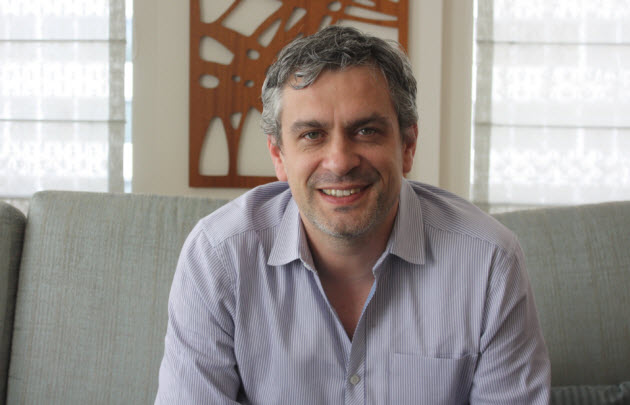 Neil Young is the chief executive of Ngmoco, the mobile game publisher that was acquired by Japan’s DeNA for up to $403 million last fall. But Young says that wasn’t just the end point for his company and its success as a publisher of iPhone games. Rather, Young and his parent company are on a quest to create a multibillion-dollar mobile entertainment company. The centerpiece of that is Mobage and NG Core, two technologies that will be combined into a worldwide mobile social network.
Neil Young is the chief executive of Ngmoco, the mobile game publisher that was acquired by Japan’s DeNA for up to $403 million last fall. But Young says that wasn’t just the end point for his company and its success as a publisher of iPhone games. Rather, Young and his parent company are on a quest to create a multibillion-dollar mobile entertainment company. The centerpiece of that is Mobage and NG Core, two technologies that will be combined into a worldwide mobile social network.
Mobage, as the social network will be known, is based on DeNA’s Japanese mobile social network and centers around an “interest graph,” or an organization of people based on what their interests are. Ngmoco is spearheading the creation of this platform and will launch it in the coming weeks in the U.S. on Android phones. Once it does so, we’ll learn more about whether DeNA got its money’s worth when it bought Ngmoco and whether Young’s prediction about multibillion-dollar mobile social gaming companies will come true.
We got the chance to interview Young recently about where the Ngmoco is headed under its new parent company and what we can expect from Mobage:
 VB: Can you gives us an update on Ngmoco under DeNA?
VB: Can you gives us an update on Ngmoco under DeNA?
NY: Let me back up and give you the history that led to the acquisition and then talk about where we are, and where we are headed. In May, 2009, our management team at Ngmoco sat down and we contemplated what trajectory were on.
We had done that the prior year, when we made the shift from paid downloads to free-to-play games. The free-to-play business was good. As we projected where we thought business would be, one, two, or three years away, we thought about the value that we could create. We were quite happy with the trajectory the company was on. We saw we could be in the hundreds of millions of dollars in revenues.
But given the impact that the iPhone and Android were making on the market place, and the impact of tablets, we felt maybe we were missing something. Maybe there was a bigger opportunity out there. And so we sort of started looking at what our competitors were doing. In the U.S. and in the West, we didn’t really see anything that made us feel like we were missing out. We felt that in the free-to-play market, we were doing a really good job. And with the Plus+ social network, we felt we were doing a good job. We had a very different approach to it where we focused only on the highest quality software. At the time, we had about 10 million registered customers, and now it’s closer to 20 million.
We looked at the landscape and felt like we were in a pretty good position. We had been hearing for a year that Zynga was going to come in and eat our lunch. We had survived the launch of their FarmVille and we had survived their launch of Mafia Wars. We had unique skills and knowledge. We started looking outside of the U.S. and Western markets at companies like Tencent in China, which was succeeding with its QQ service. We also saw the success of Nexon and NHN in Korea and the success of DeNA and Gree in Japan.
And as we looked at all of these different markets and companies, we asked ourselves what the similarity was between the conditions on the ground in those markets that enabled those companies to succeed versus the conditions on the ground in the West. The conditions on the ground in China were fairly unique. In Korea, the market was very PC-centric. But the conditions in Japan were really similar to ours. In the early 2000s, Japan had already done what was happening in the U.S. in 2010. They had low-cost or unlimited data plans, 3G penetration, and critical levels of usability and functions. They had frictionless payment systems. That was all driving huge usage patterns.
VB: They were way ahead?
NY: Yes. They had direct carrier billing in those markets. Basically, they had the equivalent of iTunes as a default billing mechanism for online purchases. We started studying DeNA and Gree more closely and we reached the conclusion that there was an opportunity to essentially create the Western DeNA. That would require us to do another kind of investment in our company and go from being an application developer with an affiliate network to a platform company with great first-party and third-party development.
If we wanted to replicate the model that DeNA had pioneered in Japan but adapted for the Western markets, it was going to be essential for us to make a new technology framework. We had to create a customer aggregation framework. And we had to produce new levels of hit products. There are a lot of moving pieces to this puzzle. But when we looked to the assets that we had, we saw we had the pieces of a puzzle. We had the Plus+ network, our first-party game studios, the network of developers or affiliates we had on the Plus+ network, the physical infrastructure we built to support those things, and some internal technology. We could offer native-quality applications in Javascript by binding our native applications programming interfaces to Javascript so that you can write game logic in Javascript and move your content very quickly across different devices and device configurations. We could do that with fast iteration speeds. The analogy is that it was like editing an app rather than submitting changes to the App Store.
We felt like we had the pieces of a puzzle. So we went out and we started raising money against that vision. We talked to a lot of different financial investors and we got great interest to raise a big round that would help us fund that transition. We wanted to go off and build a multibillion dollar company in that space, the Western DeNA. As we were doing that and putting together that financing, we sort of asked ourselves a question. [Can we do this globally?] Japan, and Asia in general, is a very big and vibrant market. But realistically, we would be able to execute that effectively.
We would have to build a successful Japanese operation that could compete with DeNA. We considered a partnership with one of these Asian companies. Maybe we could do a technology swap. Maybe we could find a strategic investor. And so we approached the players in those territories.
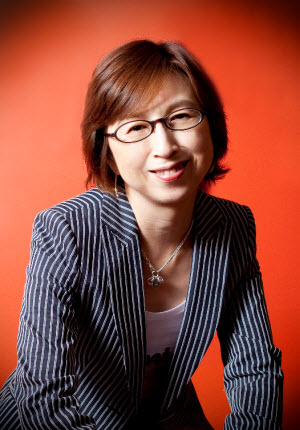 VB: You already knew DeNA’s management?
VB: You already knew DeNA’s management?
NY: Yes. When we met again with Tomoko Namba (CEO of DeNA, pictured right), she said they share the same vision. She said they believe that the market is going to grow the same way, and she said Ngmoco’s technology framework will help DeNA manage a transition in its local market from feature phones to smartphones.
She said DeNA hadn’t been successful in the West yet and needed to be to continue its expansion as a company. She said she could invest in Ngmoco but wanted to explore the idea of acquiring the company. Over the course of the next weeks, we came to an agreement on an acquisition. That closed in November and we have been working on integrating the companies.
We are working on the roadmap, technology, and business frameworks to bring Mobage-town (DeNA’s mobile social network, which will be known as Mobage in the future) to the global market with a focus on smartphones. On Dec. 15, we announced the roadmap for a Japanese release of our software development kit with a limited set of launch partners. About 40 companies from the U.S. and Japan are participating in a private beta test. We also announced our partnership with Samsung where Mobage will power Samsung’s devices. It will be preloaded on all Samsung Android devices around the world. Over time, it will evolve into a service that we are going to introduce.
So, fast forward to today, and in March we will open the sandbox for developers in Japan. In April we will launch the Mobage smartphone service in Japan, the Apple smartphone service in Japan. Later in the second quarter, we will release the sandbox for the rest of the world and the Mobage service for the Western markets. That’s the overview of our opportunity to build a future entertainment network.
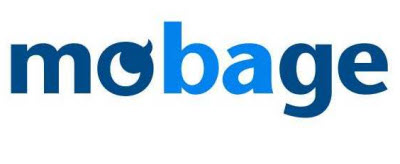 VB: Tell us more about Mobage?
VB: Tell us more about Mobage?
NY: It’s basically got a world-class network when it comes to monetization of a social games service. And it is used by millions of people every day to play games in consumer entertainment on their cell phones and, to a lesser degree, on PCs in Japan.
And it is a rough blueprint for what you can accomplish in the rest of the world. There is an opportunity to build something that will impact this mobile generation in the way that MTV impacted rock-and-roll fans a generation ago. It can be something that is culturally relevant, something that you know isn’t just linear programming. It’s interactive programming that you know isn’t just a solo experience but a social experience. I think the really big companies of the next decade are going to be companies that are focused on some of the “interest graph.” If Facebook’s social graph is about your friends and the location graph is about some places you know, the interest graph is about what people want to do.
Games and entertainment is a really big piece of what people want to do. And so the learning and the knowledge from DeNA’s implementation in Japan, when combined with our view of the Western market, will be a perfect combination.
NG Core is a technology framework that is available to developers today. We are almost at the 1.0 version of the release of NG Core.
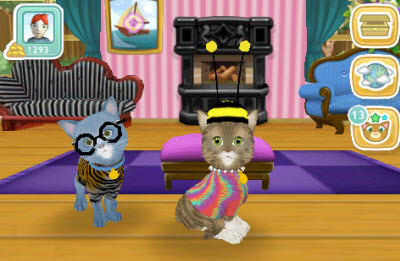 VB: What are some of the features? Are they things like the leaderboards, achievements, friend requests, and multiplayer challenges?
VB: What are some of the features? Are they things like the leaderboards, achievements, friend requests, and multiplayer challenges?
NY: No. We have all of those things. To put it to perspective, the Plus+ functionality is what you described. We need on top of that the functionality to build a true social network. You’ve got friends, followers, leader boards, awards, something like messaging, match making or challenges, personalizing avatars. When you have all of those things, that’s about 10 percent of the puzzle.
You also need community services, you need gamer card (identity) functionality, the ability to get a message inside an application. For a game to have its own graph that’s part of a larger graph, a virtual graph versus a real graph, we think that is a really important piece of this puzzle. That allows you to meet new friends based on who you meet inside the interest group, or inside the game. Then you also have to have bank currency management, virtual goods, provisioning systems.
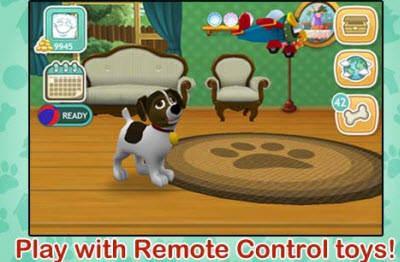 VB: You can’t just sort of take Plus+ and relabel it. You are actually building a bunch of stuff on top of it?
VB: You can’t just sort of take Plus+ and relabel it. You are actually building a bunch of stuff on top of it?
NY: On top of that yes. A lot of that is what DeNA has built with Mobage in Japan. A lot of that will be common with what we are building here. Plus+ and everything else is all being rebranded as Mobage. Some of it will work in the West. Some parts will not.
VB: How key is Mobage to how well DeNA is doing?
NY: Mobage is perceived as and understood as the essential glue that keeps people coming back to DeNA’s games. And Mobage itself is the technology framework, but it’s also a whole set of services that sit on top of the games both for communication and content delivery or commerce. There are things like celebrity blogs, which attract a lot of people and get them to use a lot of features. It’s all tied together through this kind of social entertainment network framework.
VB: And is there an analogy for it in the West?
NY: I don’t think so. The closest thing is the virtual graphs that exist in World of Warcraft, [the biggest massively multiplayer online game]. It has its own economy and way for allowing you to communicate with people who have the same interests as you.
VB: So when you introduce it here, you’ll call it a social network?
NY: It absolutely is a social network. It is a social entertainment network.
VB: And that then becomes the thing that everybody has described as what’s missing from things like the iPhone. For instance, Facebook is a social network by itself. If there was something like that on the iPhone itself, then the amount of activity on the iPhone would go up dramatically.
NY: Yeah, I think so. I think there are specific implementations for specific platforms. So there are business rules and business conditions that exist in iOS [Apple’s operating system]. There are different business rules and conditions that exist on Android and then still other rules on other mobile devices and different rules again on the web.
And so ultimately, when we are trying to build this type of network, we need to be device agnostic and operating system agnostic to some degree. I think really about humans at the end of the day. Our customers are humans and so we have to be able to get service into the hands of humans. But we have to start with the platforms.
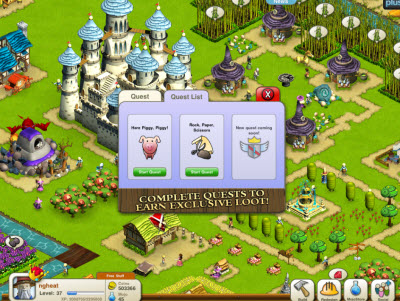 VB: And can you implement Mobage fully on the iOS, or can you only do that on Android?
VB: And can you implement Mobage fully on the iOS, or can you only do that on Android?
NY: Android is probably the place that we can implement it fully today completely. That is, we can create one destination application that binds many of these experiences together in conjunction with individual applications that surface on the market place. Those individual apps can then invoke the functionality of that larger service application. On iOS, you still have a great experience but your experience is a little less integrated. You can have the individual applications, the actual games. They are the fuel for the ecosystem on the iOS. To realize the full potential there, we need to think about user-centric services versus distribution point centric services.
So we need to figure out how to connect customers together, so that they feel like they are part of a really rich and vibrant ecosystem that they are committed to coming back to. And we have been able to do that in individual games, to build communities within games that persist over time. Then the next step is to build communities in services over time that actually feel an affinity to the service and affinity to others inside the service.
VB: How would you make money from this?
NY: There are a couple of ways. The first is from our own first-party products, our own games. The second is by sharing revenue with the developers that participate inside the network. Then, lastly, we can make money on advertising. Those are the basic mechanisms to monetize that framework in that platform.
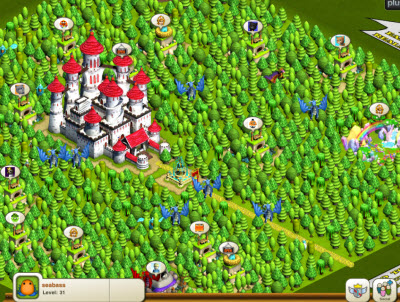 VB: And will you charge a 30 percent fee for developers participating in your network, as Facebook and Apple do on their platforms?
VB: And will you charge a 30 percent fee for developers participating in your network, as Facebook and Apple do on their platforms?
NY: I can tell you we are in the first year going to focus on putting together frameworks that will incentivize people to come to the platform. We want them to deliver their intellectual property [games and other entertainment] on the platform and we are going to be very friendly. Developers at the end of the day need an audience and they need monetization.
And we think we can give them access to a big audience in a global market, a market certainly in Japan where they are not even present now. That’s already a multibillion-dollar industry. We would increase their opportunity to access customers and increase their ability to monetize their products. The case we have to make in a compelling way is that anything they would be losing in revenue share they will be more than making up for in volume.
VB: And then are there some interesting things you can do with the analytics and recommendation services. You can help the developers and users with the discovery of content?
NY: Yeah, certainly.
VB: So then the opportunity here is a lot like pay-per-engagement, like when a bank rewards a service that can put it in touch with someone who will be a customer for life?
NY: Absolutely. I think that’s very powerful and we have the ability to improve the eCPMs [advertising revenues per number of users] from the ads because they can be a lot more effective than ordinary ads. We are poring through terabytes of data already from our clients every single month. We process that and can infer the buying habits of a customer and how likely they are to come back.
And that’s valuable to advertisers. Now we have to be able to protect the privacy of our customers, but we think that if we are recommending the right brands or applications to our customers, that is going to be a win-win for everyone.
VB: Will you do this right out of the gate, or will this develop over time?
NY: Well, we are certainly offering a rich set of analytics at launch that will enable developers to understand the full performance profile of their products. And we will certainly be working with our ad partners to make sure that we have the very best eCPMs. Ngmoco has been serving ads in its games now for quite a long time and we’ve learned a lot about how to optimize those eCPMs.
We have also been able to produce new types of advertising units called incented ad units, which are really important to brand advertisers that want to reach our audience. We say that you can watch this video and receive free gold inside the application.
VB: Do you think you will be able to launch Mobage on iPhone at the same time you launch on Android or do you have to go one at a time?
NY: We will probably be out on Android first for the integrated service. The individual application is something that could be launched on both platforms right away. Our goal is to not actually produce the same application on both platforms. Our goal is to quickly make use of the specific hardware that goes with each platform.
VB: Is it weird that you started as an actual iPhone shop and now, by the business path you have chosen, you have to become an Android shop?
NY: I think we are both. We have to be platform agnostic if we want to build a big company. We certainly love iOS, and we love the ecosystem, and we love the quality of the hardware and the quality of the customers and the quality of the payment mechanisms. There is a lot to love about iOS. But I think we’d be doing our business a disservice if we ignored Android given the momentum Android has.
VB: But can you become the Mobage of the West on the iPhone, or is there an obstacle to that?
NY: The single biggest obstacle is that we can’t build an integrated application.
VB: You said that quickly, what does that mean?
NY: In the integrated service application, you could launch Mobage, the social network, and that place would house your complete experience. Now you can come to the experience by using an individual application that is part of the overall network. You launch a game and then come to the network. You can then join the network and go directly to the network. In the case of our Samsung partnership, we have an application that is on the home page of every telephone they build on the planet and every tablet they build. It’s like a channel unto itself that leads to a great social entertainment network.
On iOS you can’t actually have that single application that houses everything because the business rules don’t allow you to aggregate content together.
So you have to have individual applications that run on iOS. Now, that doesn’t stop you from having a really rich experience. We can still deliver a lot of the pieces. But there are limitations.
VB: So on the iOS, an app has to be an app. It can’t be a portal to other things like a social network?
NY: Correct. We are at the very beginning here right now. There are going to be a lot of changes that happen. We have just seen how much the changes happen around subscriptions and publishing content, and I am sure that there will be a whole bunch of changes as the market evolves. I do trust that Apple absolutely does have the best interest of the customers at heart. They have time and time again demonstrated to me that is actually the core of their business concerns. So I believe that, as they evolve their platform, they are going to invent and allow some really progressive ways of delivering content. And this is a marathon.
VB: And you can kind of say that what you are doing is just creating a folder for applications, not a portal?
NY: Yeah, that’s certainly one way you can look at it. I mean there are lots of considerations, and I wouldn’t want to speak for Apple. I think only Apple really understands all its considerations. But I am hopeful that, over time, we will evolve to models that allow the delivery of channels. Like, for instance, ABC should be able to aggregate a lot of shows together and deliver a channel on the iPhone just as they deliver that on TV. If it’s a great experience for users, why not?
I don’t control that. I can control what we do. We share the desire of Apple and Google to deliver great experiences to customers, so we are going to focus on doing that. We trust that, as the market evolves, we will be able to take advantage of the platforms and their features.
VB: Is Mobage the equivalent of Xbox Live, or something else?
NY: No. I think it is more like a Facebook for games and entertainment. I think there is a fundamental issue for Facebook, and it sounds kind of crazy. Facebook has some limitations. You have to think on this scale of innovation if you want to take advantage of the real opportunity here. Sometimes you want an anonymous experience or to select a small group of friends to share things with. If I have 1,600 friends on Facebook, I don’t want them all to know that I just did great in a game. Only the people who care about that should know.
VB: I think I see now the connection between the broader ambition you have and the price that DeNA paid for Ngmoco, which some people said was very high.
NY: This is very important to how you value the company. The overall ambition is very large. I think the valuation of Ngmoco was driven by a few factors. One was the NG Core technology framework. Second, we have a track record of consistently producing successful products on the iPhone platform. And third, if you are a Japanese company and you want to get a global footprint, one of the biggest challenges is getting a management team that can execute that as quickly as possible. Lastly, there is the Plus+ network, which has 20 million registrations in the West. We’ve had more than 120 million installs of Plus+ products. There are 60 million friend connections. We operate a server network that keeps it altogether. And we own all of our own intellectual property. Right now, DeNA does not own much of the intellectual property on its network.
VB: The question for the mobile gaming market is, how soon does its momentum catch up with the amazing momentum of companies like Zynga on Facebook? Right now, mobile games have lagged, and that is why Zynga’s valuation is so much higher. How far behind is the mobile industry?
NY: In Japan, DeNA is doing $1.3 billion in revenue with way fewer customers than Zynga. That shows you the tremendous opportunity in front of us. You have the No. 1 company in mobile games and the No. 1 company in social games. On Facebook, if you are not in the top five game companies, you really don’t matter. You may be a nice lifestyle game business. But you can’t support 40 or 50 people. In that environment, it will be tough for multiple companies to get into the billions of dollars in revenues.
I think the mobile game space is different. I think ultimately mobile and mobile operating systems will be more ubiquitous than Facebook games. And I think there is going to be a much bigger market and much bigger opportunity out there, so I hope there will be multibillion-dollar companies in the one, two, and three spots. If you are a top 10 company, you are going to have a great, exciting business. How far away from that are we? I think by 2014 we will see multibillion-dollar Western mobile game companies with social game platforms. We hope to be one of them.
VentureBeat's mission is to be a digital town square for technical decision-makers to gain knowledge about transformative enterprise technology and transact. Learn More
